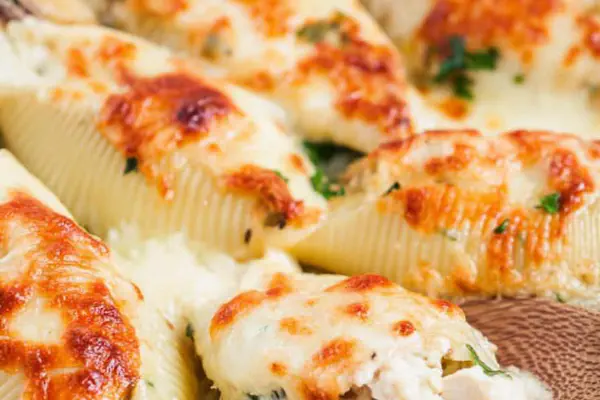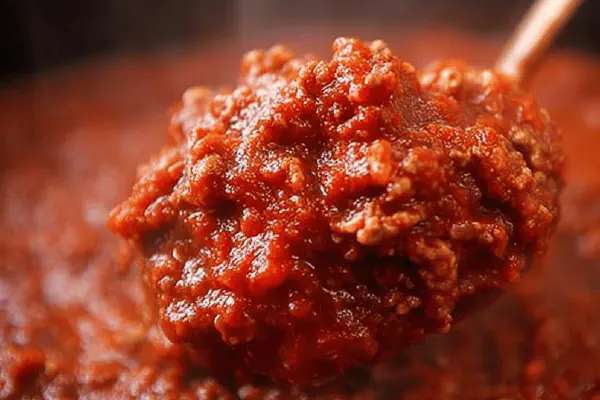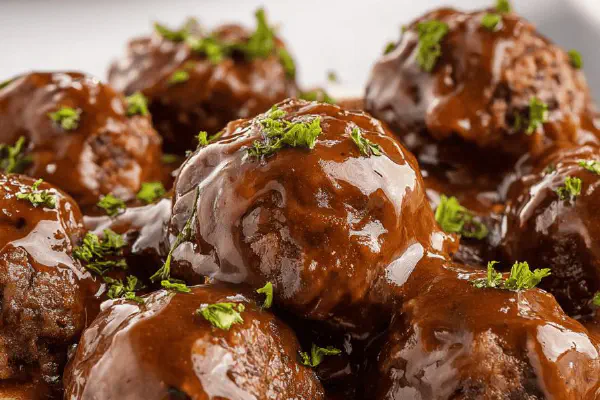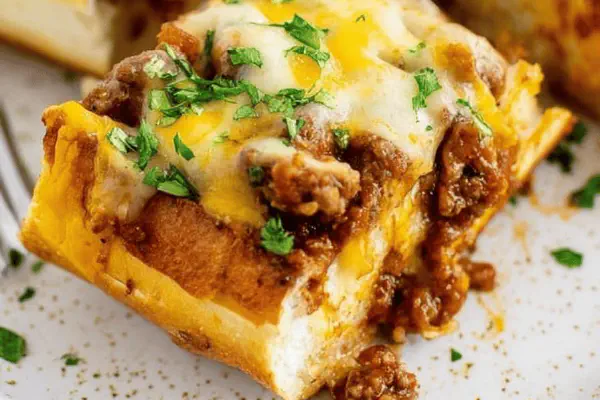Simplest Beef Lasagna
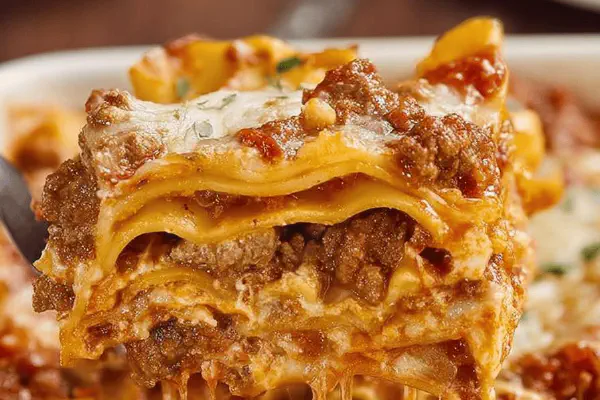
By Emma
Certified Culinary Professional
Ingredients
- 1 lb ground beef, browned
- 2 1/4 cups marinara sauce (reduce original by 5%)
- 1 1/4 cups water (increased slightly)
- Uncooked lasagna noodles (use no-boil or regular, 12 pieces)
- 1 1/2 cups ricotta cheese (swap for cottage cheese or soft tofu for twist)
- 1 cup shredded mozzarella cheese (increase total shredded cheese by 10%, add provolone mix)
- 1/2 cup shredded provolone cheese (new ingredient twist)
- Nonstick spray or olive oil for greasing baking dish
About the ingredients
Method
- Start heating oven to 430°F; grease 11x7 pan thoroughly with spray or oil.
- Brown ground beef over med-high heat till crumbly, drain excess fat well or blot with paper towels; return meat to pan over med-low heat.
- Pour in marinara sauce and water, stirring to loosen cooked bits from pan; simmer just enough to blend flavors, no heavy reduction needed.
- Spread about one-fifth of beef sauce evenly on the pan bottom; then cover with a layer of noodles, overlapping slightly but not crowded.
- Dollop half the ricotta (or chosen substitute), spread gently but thoroughly; sprinkle a mix of about one-third mozzarella and provolone cheese.
- Add roughly one-quarter of the remaining sauce atop cheese; then another noodle sheet layer.
- Use rest of ricotta, spread evenly; top with half remaining mozzarella-provolone combo.
- Layer noodles again; pour one-quarter of sauce over this layer.
- Finish with last noodle layer, then cover with final portion of sauce and sprinkle remaining shredded cheeses evenly on top.
- Seal tightly with foil crimped down edges to trap steam during bake.
- Bake around 65 minutes; check tenderness by piercing pasta edge with fork near end—should glide in with slight resistance but no crunch. If crisp, bake longer uncovered up to 10 minutes.
- Let rest uncovered about 10–15 minutes before slicing—juices settle, easier cutting.
Cooking tips
Chef's notes
- 💡 Brown beef slow med-high heat till crumbly; drain fat completely or blot. Fat too much? Greasy layers. Return beef low heat before sauce. Flavors build in pan bits—scrape gently when adding sauce.
- 💡 Use no-boil noodles or boil just minutes if wanting texture bite. Over-soak kills chew, undercook is crunch pain. Watch pasta edges during bake with fork poke. Slow steam trapped by foil cooks noodles without drying edges.
- 💡 Ricotta swap? Cottage cheese blended smooth works, adds curd texture. Soft tofu alternative for creaminess but no dairy flavor. Mozzarella often bland solo—mix equal provolone for sharper melt and deeper taste. Cheese mix affects final texture hugely.
- 💡 Water addition tricky—too little pasta hard center, too much watery sauce. Adjust slightly up or down based on saucy feel when stirring pan. Aim for sauce flowing, not pooling at bottom after bake. Watch moisture during simmer.
- 💡 Oven heat 425–430 °F sweet spot. Too low drags baking time, pasta won’t soften well; too high browns cheese fast but can dry top. Foil wrap seals steam inside. Crimp edges tightly or steam escapes, dry layers form.
Common questions
How to check pasta doneness?
Fork poke near edge works best. Should sink with gentle resistance. No crunch. Feel slight softness. If firm, bake uncovered 5–10 mins more. Watch carefully not to dry out.
Can I swap ground beef?
Ground turkey or plant crumbles work. Adjust seasoning with garlic, herbs heavier. Turkey bland alone. Plant for veg twist but texture varies. Brown well or risk soggy layers.
What if sauce too thin?
Simmer a bit longer before layering to thicken. Or reduce water slightly. Too watery messes bake—no thick coat on noodles. Lift edges after baking, if sauce pooling, next time reduce liquids.
How store leftovers?
Cover tightly fridge up to 4 days. Reheat covered with splash water so pasta stays moist. Freeze in portions. Thaw in fridge overnight. Reheat slower oven or microwave with foil tent.
